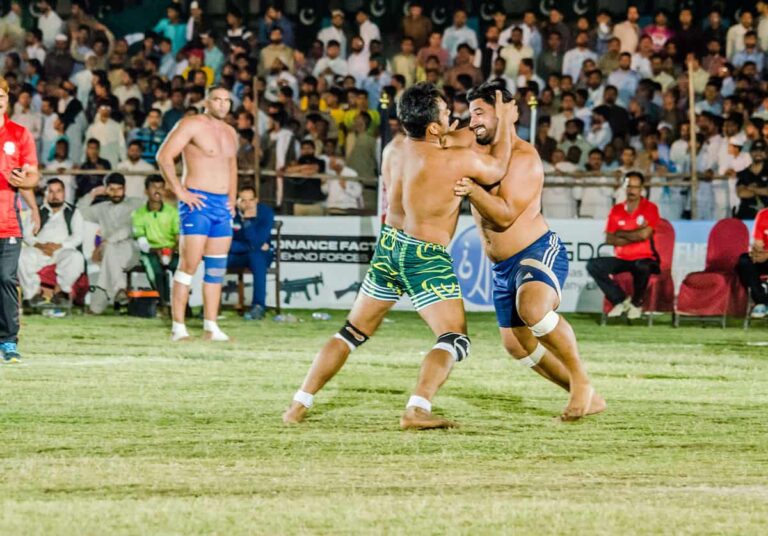Sports have always played a pivotal role in shaping the cultural fabric of Pakistan. From cricket, the country’s passion, to kabaddi, a traditional game that resonates with local roots, the evolution of sports in Pakistan reflects its history, societal changes, and the fervor of its people. This blog will explore how these sports have developed over the years, their significance in Pakistani culture, and the emerging trends that are reshaping the sports landscape.
Cricket: The Unrivaled Passion
Cricket is undoubtedly the most popular sport in Pakistan. The love affair began during British colonial rule and has only intensified since then. The establishment of the Pakistan Cricket Board (PCB) in 1952 marked a significant turning point, providing a structured framework for the sport. Over the decades, Pakistan has produced legendary cricketers like Imran Khan, Wasim Akram, and Shahid Afridi, who have not only made their mark internationally but have also inspired generations.
The 1992 Cricket World Cup victory remains a defining moment in Pakistan’s cricket history, igniting a wave of national pride and unity. Cricket matches, especially against rival teams like India, create an electrifying atmosphere, with fans uniting regardless of their backgrounds. This sport has transcended mere entertainment; it serves as a unifying force that brings people together in celebration or sorrow.
Hockey: The Forgotten Glory
While cricket dominates the sporting scene, hockey was once the pride of Pakistan, boasting a rich legacy. The country has won three Olympic gold medals and four World Cups, making it a formidable force in the sport during the 1970s and 1980s. However, over the years, hockey’s prominence has waned due to various factors, including lack of funding, infrastructure challenges, and the rise of cricket.
Despite its decline, hockey remains integral to the national identity. Efforts are being made to revive interest in the sport, with grassroots programs and tournaments aimed at fostering young talent. The Pakistan Hockey Federation continues to strive for better performance on international stages, but restoring hockey to its former glory will require collective effort from stakeholders, including the government, sponsors, and the community.
Kabaddi: A Traditional Resurgence
Kabaddi, a sport deeply rooted in South Asian culture, has seen a resurgence in popularity in recent years. Traditionally played in rural areas, kabaddi has now made its way into urban centers, capturing the interest of youth and sports enthusiasts. The establishment of professional leagues, such as the Pakistan Kabaddi League, has contributed significantly to its revival, offering players a platform to showcase their talent.
Kabaddi’s appeal lies in its simplicity and the thrill of the game. It requires strength, agility, and strategy, making it exciting for both players and spectators. Moreover, kabaddi serves as a reminder of cultural heritage, often being played in local festivals and gatherings, reinforcing community bonds. As more youth engage with this sport, it presents an opportunity to celebrate and preserve Pakistan’s rich sporting traditions.
The Changing Landscape of Sports in Pakistan
While cricket, hockey, and kabaddi dominate the conversation, the sports landscape in Pakistan is evolving. Emerging sports like football, basketball, and volleyball are gaining traction, especially among the younger population. Initiatives to promote sports at school and college levels are fostering a diverse sporting culture that extends beyond traditional favorites.
The rise of digital media has also played a significant role in this evolution. Social media platforms and streaming services have made various sports more accessible, enabling fans to follow international leagues and competitions. This exposure is inspiring a new generation of athletes and sports enthusiasts who are eager to participate in and promote different sports.
Challenges and Opportunities
Despite the growth and revival of various sports, challenges remain. Limited funding, inadequate infrastructure, and a lack of proper coaching often hinder the development of athletes. To address these issues, collaboration between government bodies, private sectors, and sports federations is crucial. Investing in sports facilities and programs can create a more conducive environment for talent to flourish.
Moreover, there is a growing recognition of the importance of sports in promoting physical and mental health. Initiatives aimed at encouraging physical activity, especially among youth, are essential for building a healthier future. Sports can serve as an avenue for personal development, teamwork, and discipline, qualities that are invaluable in all aspects of life.
Conclusion
The evolution of sports in Pakistan—from the cricket pitch to the kabaddi field—illustrates the country’s diverse sporting culture and rich heritage. While cricket remains the heartbeat of Pakistani sports, the revival of hockey and the emergence of kabaddi highlight the importance of honoring tradition while embracing change. As Pakistan continues to develop its sporting landscape, the collective efforts of players, coaches, and fans will be vital in nurturing talent and fostering a love for sports across the nation. Through sports, Pakistan can cultivate unity, pride, and a sense of belonging that transcends boundaries.

